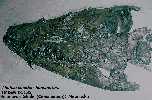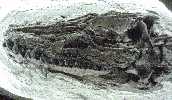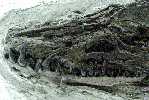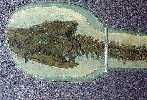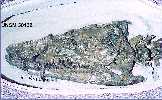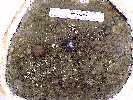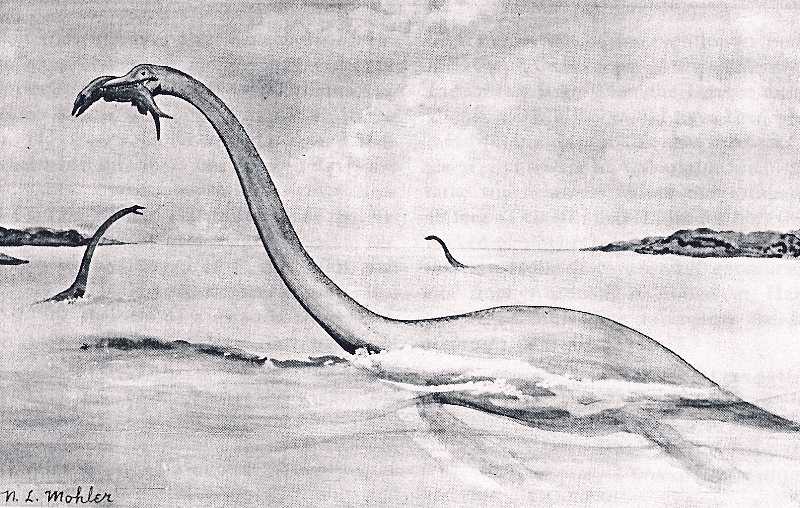 |
THE LONGEST NECK IN THE OCEAN
Copyright © 2000-2009 by Mike Everhart
Page updated 02/14/2009
LEFT: Drawing by N. L. Mohler,
Copyright by the University of Nebraska State Museum, used with permission. Note
that elasmosaurs could not lift their head and neck out of the water as shown here.. |
In 1970, Sam Welles published a brief note entitled "The Longest Neck in
the Ocean" in the Museum Notes of the University
of Nebraska State Museum. The paper was about the discovery of a very large elasmosaur
in the Graneros Shale of eastern Nebraska in 1964. The specimen was found
essentially complete although some caudal vertebrae had eroded out and been lost prior to
its discovery. The elasmosaur (Thalassomedon haningtoni; UNSM 50132) was reported
to be about 41 feet long... almost as long as the Elasmosaurus
platyurus described by Cope (1868). Surprisingly, it had fewer cervical vertebrae
than E. platyurus (63 vs. 71). The head, and most of
the neck of this specimen is on exhibit in the floor of the Cretaceous exhibit at the
University of Nebraska State Museum, Lincoln, NE. About 80 gastroliths are also on
display.
Click here for FOSSILS FROM THE RESEARCH
COLLECTIONS - UNIVERSITY OF NEBRASKA STATE MUSEUM
Here's
a more recent (2003) story about the discovery of another elasmosaur in Nebraska.
References:
Carpenter, K., 1999. Revision of North American elasmosaurs from
the Cretaceous of the Western Interior, Paludicola, 2(2):148-173
Cicimurri, D. J. and M. J. Everhart, 2001. An
elasmosaur with stomach contents and gastroliths from the Pierre Shale (late
Cretaceous) of
Kansas. Kansas Acad. Sci. Trans 104(3-4):129-143.
Everhart, M. J., 2000. Gastroliths
associated with plesiosaur remains in the Sharon Springs Member of the Pierre Shale
(Late Cretaceous),
Western Kansas. Kansas Acad. Sci. Trans. 103(1-2):58-69.
Everhart, M. J., 2001. Revisions to the
Biostratigraphy of the Mosasauridae (Squamata) in the Smoky Hill Chalk Member of the
Niobrara Chalk (Late Cretaceous) of Kansas. Kansas Acad. Sci. Trans 104(1-2):56-75.
Everhart, M. J., 2002. Where the
Elasmosaurs roam...... Prehistoric Times. 53:24-27.
Massare, J. A. 1987. Tooth morphology and prey preference
of Mesozoic marine reptiles, Jour. Vert. Paleon. 7(2):121-137
Schultz, C. B., 1965. The story of a Nebraska sea serpent. Museum
Notes, University of Nebraska State Museum. 27:1-3.
Shimada, K., 1997. Paleoecological relationships of the late
Cretaceous lamniform shark, Cretoxyrhina mantelli (Agassiz). Journ.
Paleon. 71(5):926-933.
Storrs, G. W., 1999. An examination of Plesiosauria (Diapsida:
Sauropterygia) from the Niobrara Chalk (Upper Cretaceous) of central North
America, Univ. Kansas Paleon. Contri. (N.S.), No. 11, 15 pp.
Welles, S. P., 1970. The longest neck in the ocean. Museum Notes,
University of Nebraska State Museum, 43:1-2


